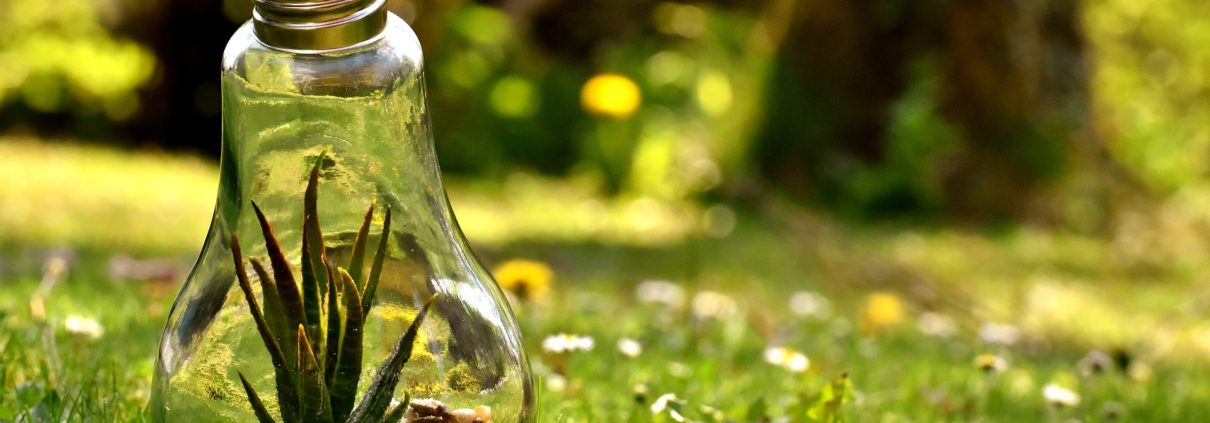Wind Farms and Solar Panels: The (Near) Future of Green Energy and Land Real Estate
Many people talk about “green energy,” such as wind farms and solar panels, like it’s as futuristic as flying cars. What these people don’t realize is that wind and solar energy is already taking the world of energy by storm. Companies like Disney and Google are spending hundreds of millions of dollars on wind farms and solar panels. Farmers are also turning to green energy sources to cut back on their energy bills and make extra money off of their land. Let’s take a look at how the land industry is being shaped by green energy.
Even the biggest fans of green energy will admit that wind farms look kind of creepy; like an alien colony landed on Earth. While they can be strange looking, their ability to convert wind into energy is impressive. The average 10-kilowatt wind turbine produces around 16,000 kilowatts annually. In comparison, the average U.S. household consumes about 10,000 kilowatts of electricity each year.
Not only can you power your house (and then some) with a single wind turbine, you can also get a pretty sweet tax break. The federal renewable electricity Production Tax Credit (PTC) is a per-kilowatt-hour tax credit for the electricity generated by your wind turbine that is sold to an unrelated person. This tax credit flies under the radar because so few individuals own wind turbines on their land. In 2016, wind farms produced a tiny amount of American energy (only around 5.6 percent), but if more people knew about this tax break, those numbers might skyrocket.
Another benefit to having a wind turbine on your property is kissing energy bills goodbye. Once the wind turbine has been paid for and installed, you can use the energy it generates instead of buying it. Imagine never paying an energy bill for the rest of your life!
While wind turbines have yet to reach their full potential, solar panels have become the stars of the green energy scene. Did you know Disney is planning to build a solar farm? It will lower the theme parks greenhouse gas emissions by 57,000 metric tons, the equivalent of taking over 9,000 cars off the road. China has invested $86.5 billion in solar. Even small farmers are getting into it. In 2017, nearly a quarter of all California farms generated onsite solar energy
Solar panels can be a great way to cut down on costs long term. Many people balk at the high prices of installing solar panels, but over time they make money. Every kilowatt your panels produce will offset whatever you would normally have had to buy from an outside company.
So, should you invest in wind turbines or solar panels for your land? While green energy is great, it’s not always the best option for everyone. Here are some things to consider:
- Is your state supportive of green energy? Some states are pushing green energy by offering huge tax breaks and rewarding bigger companies for using solar energy. For example, in Illinois, the Future Energy Jobs Act requires Illinois utilities to get at least 25 percent of their energy from renewable sources by 2025. If you live in Illinois, you could make serious money selling green energy to companies.
- Will green energy make more money than your current crops? While the values of crops and livestock fluctuate, the value of green energy is strong and there is a growing demand for it. However, if solar panels and wind turbines would make less money than your current land use, it might not be worth it.
- Do you have the money for the down payment? Wind turbines and solar panels will save you money in the long term, but they do cost a fair amount to install.
Wind turbines and solar panels are the future of the energy business, and that future is not as far away as you might think. Green energy has a lot to offer landowners, from tax credits to additional income. As the cost of installing green energy sources becomes more and more affordable, we will see the full range of benefits green energy has to offer the land industry.
 About the author: Laura Barker is a Marketing Assistant Intern for the REALTORS® Land Institute. She graduated from Clark University in May 2017 and has been with RLI since October 2017.
About the author: Laura Barker is a Marketing Assistant Intern for the REALTORS® Land Institute. She graduated from Clark University in May 2017 and has been with RLI since October 2017.




Trackbacks & Pingbacks
[…] for a vineyard to produce fruit, and turning a profit on wine can take even longer. Similar to green energy or timber, vineyards require a lot of money up from and can take many years to start making […]
Comments are closed.